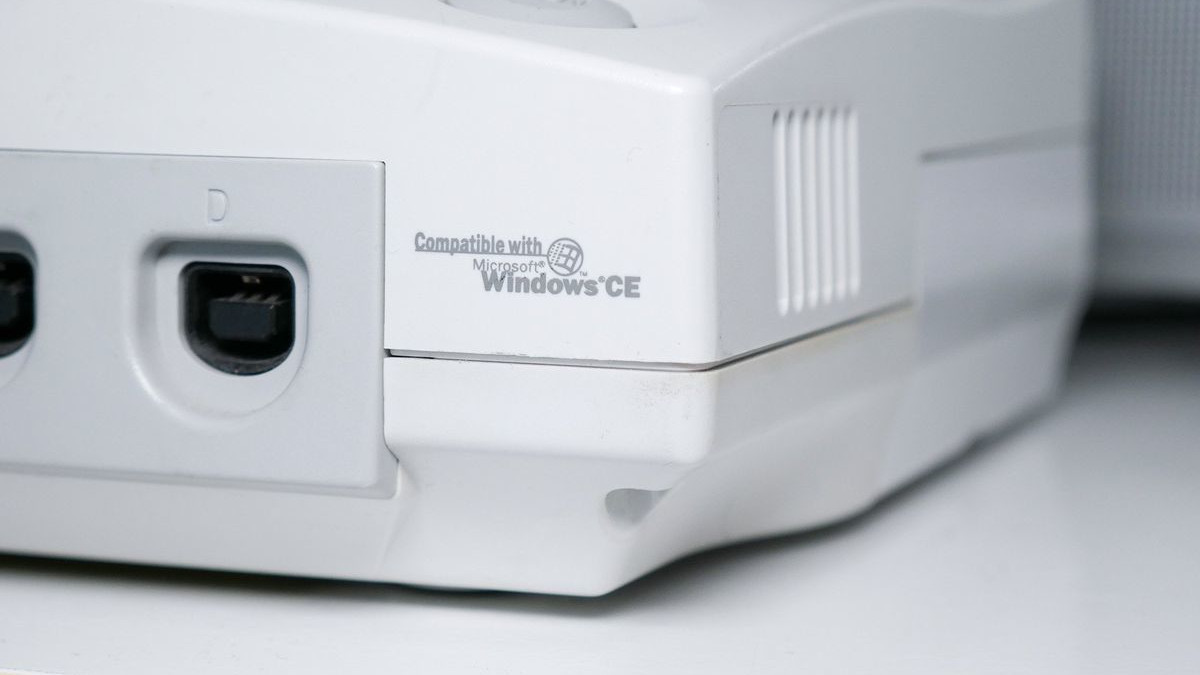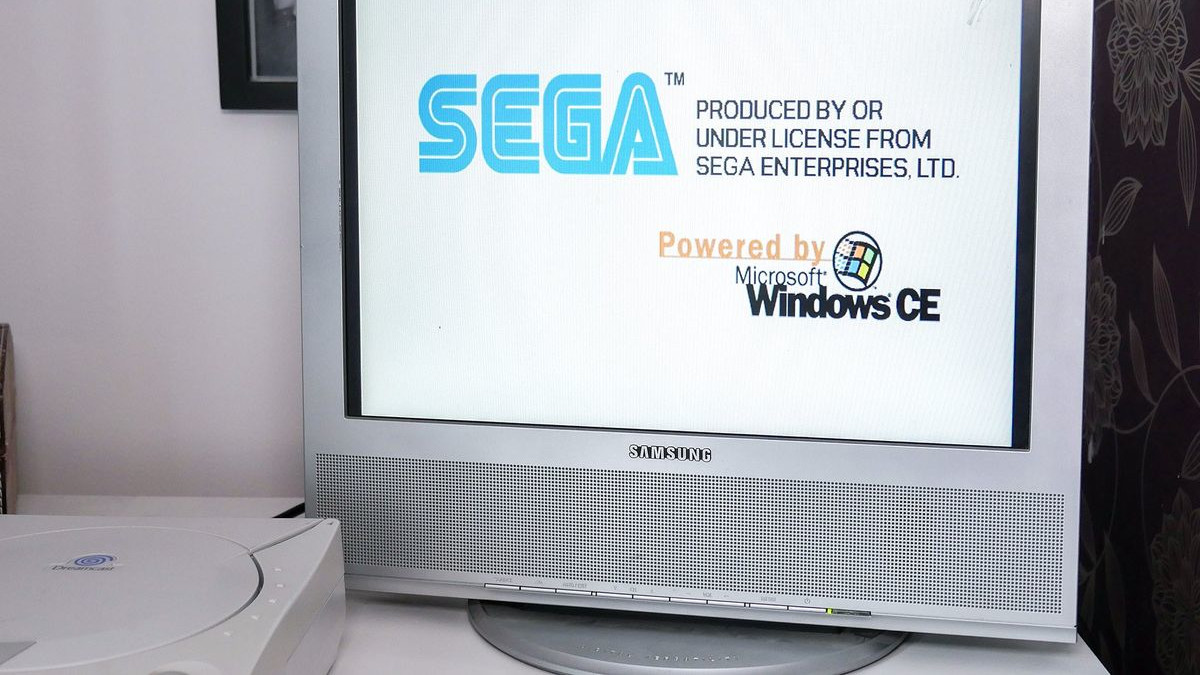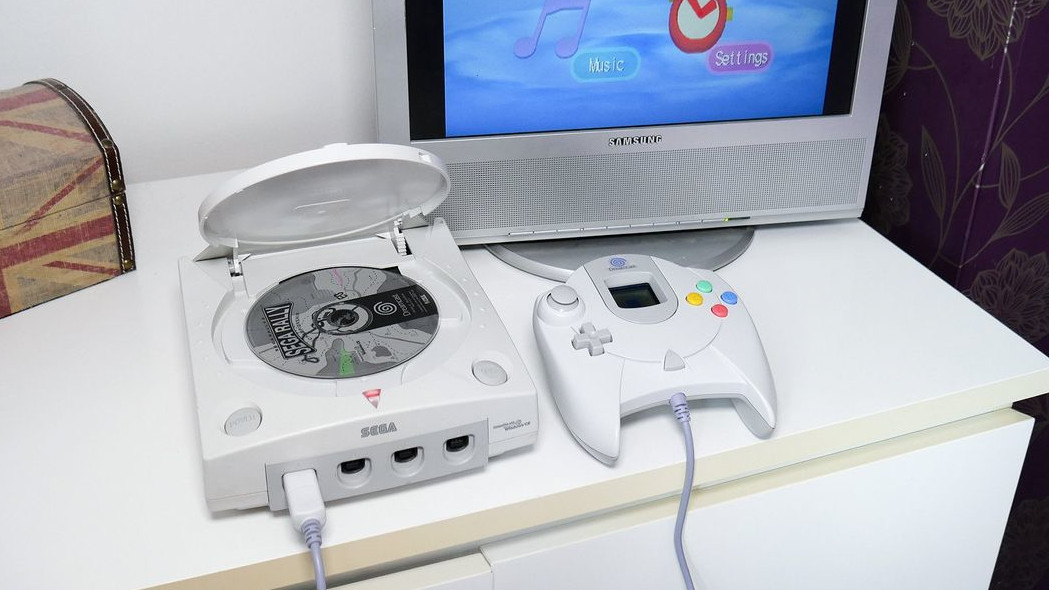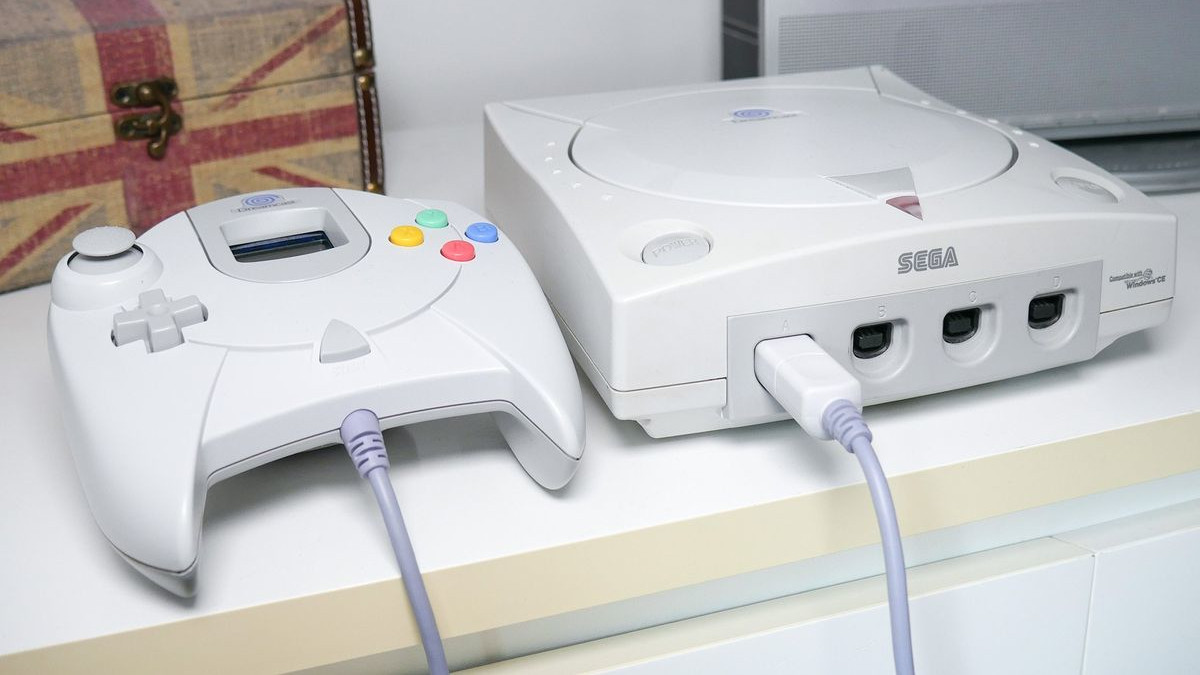The Sega Dreamcast: Microsoft on consoles before the days of Xbox
Before there was Xbox, Microsoft partnered with Sega to bring Windows to the console. Sort of.

This post was originally written in 2017, but has been tweaked slightly to suit the modern layout of the site and to celebrate the 25th anniversary of the Dreamcast.
This is the tale of the Sega Dreamcast, possibly my favorite console of all time, released to the world in 1999 (or late 1998 in Japan). In the early days it was basically Sega or Nintendo, but as the Dreamcast approached, Sony had entered the arena with the might of the PlayStation brand.
Sadly, the Dreamcast ended up being Sega's final console — and a short-lived one at that. But at its launch, it was something quite different to what Nintendo and Sony had to offer. And it had Microsoft at its side.
Well, it kind of had Microsoft at its side. What started out as a coming together of two giants, one of gaming, one of computing, ultimately fizzled out into being nothing more than a memory.
The launch of the Sega Dreamcast
On May 21, 1998, Microsoft proudly announced its partnership with Sega on the Dreamcast, the "ultimate home video game system." Here are some of the important bits from the original press release.
Microsoft Corp. today announced it will collaborate with Sega Enterprises Ltd. on Sega's new Dreamcast home video game system, slated for release in Japan on Nov. 20, 1998, and in the rest of the world in 1999. As a result of the collaboration, Microsoft will provide an optimized version of the Microsoft® Windows® CE operating system with integrated DirectX® services as the operating system for use with Dreamcast. With the inclusion of Windows CE, Dreamcast will bring the benefits of an advanced Windows-based development environment to the world of console game development for the first time. Using Windows CE, developers will be able to create cross-platform titles more efficiently by taking advantage of well-established Win32® and DirectX APIs that are source-code-compatible with the Windows operating system on the PC. Incorporation of DirectX will also allow the Dreamcast system to capitalize on the momentum toward PC gaming and the ever-increasing body of developers creating games for the Windows platform.
Microsoft
To be clear, the Dreamcast didn't run Windows CE. It never ran anything in the sense of a traditional OS, instead injecting the necessary bits when it booted up a game. What Microsoft and Sega had done was partner up to allow game developers to build titles for Windows CE that would run on the Dreamcast. The dream was real: help game developers create titles for PC and console using Windows-based tools. Any of that sound familiar?
In 1998 Microsoft already had some kind of vision to deliver what later would become a reality.
The Dreamcast console
Compared to today's monstrous machines, the Dreamcast is very small. And for a console of the 20th century, it was quite powerful. This is what the spec sheet for a 1999 console looks like:
All the latest news, reviews, and guides for Windows and Xbox diehards.
| Category | Spec |
|---|---|
| CPU | Hitachi SH-4 200MHz |
| Graphics | NEC PowerVR2 DC, 16.77 million colors Hardware-based texture compression, Super sampling |
| Memory | 16 MB main RAM (SDRAM) 8 MB video RAM 2 MB sound RAM |
| Sound | 45MHz Yamaha 32-bit RISC CPU @ 40MIPS Surround Sound support |
| Storage | Proprietary 1GB GD-Rom disc |
| Data Save | VMU (Virtual Memory Unit) |
| Dimensions | 190mm x 195mm x 78mm 7.48 in x 7.68 in x 3.07 in |
| Input | Four controller ports |
| Communication | 33.6Kbps modem (Original Asia/Japan) 56Kbps modem (USA, Europe, Asia/Japan after Sept. 1999) |
| Video Output | 640x224 NTSC via composite video or RF (Composite cables included with console) |
It's a small, top-loading console with four controller inputs on the front (since wireless controllers weren't a thing in 1999), outputs on the back, a modem and a lot of noise. If you ever look at your modern Xbox and think it's a bit noisy, go and listen to a Dreamcast when it's doing pretty much anything. That's some fan noise.
In some regions the Dreamcast's stock connector was a composite output, with three connectors, one for video, one for each audio channel. In others, like the UK, the standard way to hook up to a TV was via RF. You connected your TV antenna to this little box coming out of the Dreamcast, then plugged the box into the antenna input on your big ol' CRT TV.
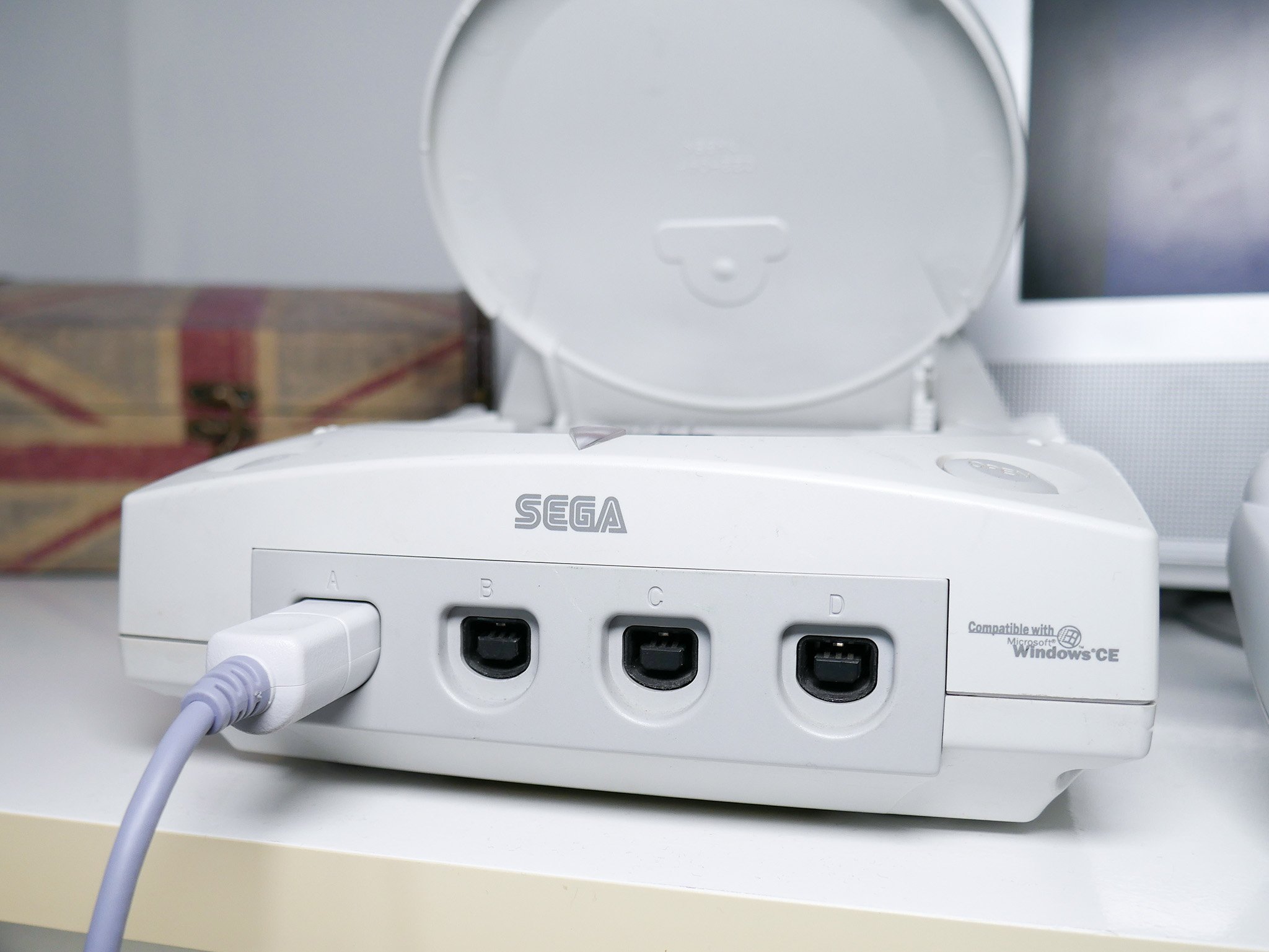
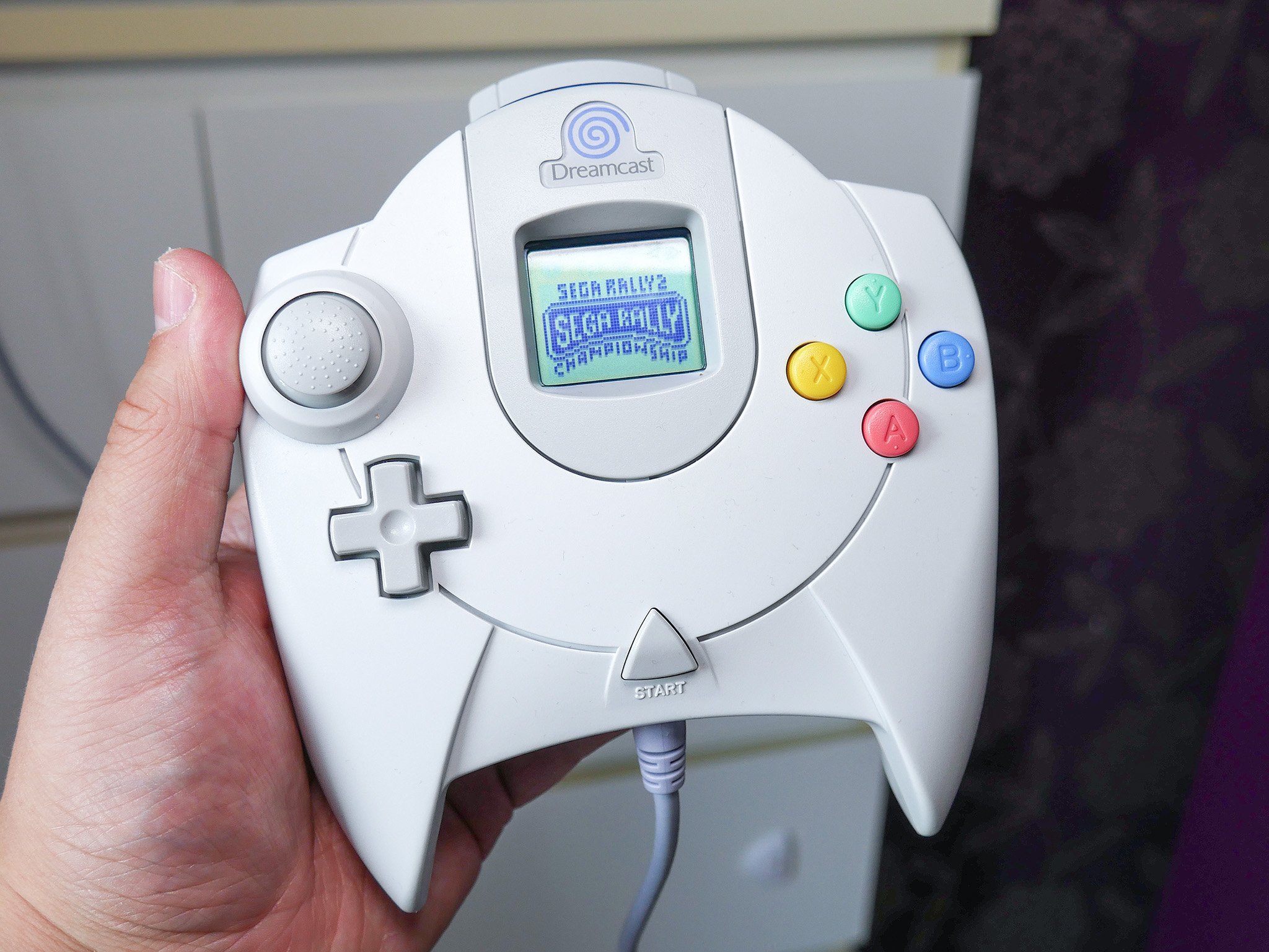
Nowadays, there are adapters and other cables that have been created to get a better quality image and, importantly, use it with more modern televisions. I'm using mine with a VGA connector, and the image is a lot nicer on a modern LCD HDTV.
The controller has always been a pretty radical thing, and while it might not necessarily have been the best idea, it stood out for sure. It's a large controller, on par with the original Xbox controller, with a single analog stick, a D-pad, start, four ABXY buttons and two triggers. It's also very light, mostly because it's plastic and there is no rumble pack inside.
That was an option you had to buy yourself and attach in one of the two slots on the controller. The other was for the VMU. Back in the day, you needed an external card to save your games on, only the Dreamcast's also had a screen, buttons and a battery which allowed some use away from the console.
Make no mistake: This was as futuristic as a games console could have been 25 years ago.
Windows CE compatible, but it didn't go well
Despite the celebratory trumpets and huge press attention on the fact Microsoft and Sega had come together, Windows CE on the Dreamcast was a catastrophe. The console itself enjoyed a short life, but Windows CE was barely adopted at all.
This is because Sega also had its own custom software that was offered as a choice to developers on the Dreamcast. And, overwhelmingly, it became the favorite. There were very few titles ever made that used Windows CE, despite the fact the Microsoft logo was proudly displayed on the front of the console.
Funnily enough, the first title to showcase Windows CE was Sega Rally 2, a first-party title. Less than 50 games were produced using Windows CE.
There was some decent support from large titles, though. The likes of Rainbow Six, Resident Evil and Tomb Raider all came to Dreamcast on Windows CE. Check out the handy link below for the full list.
To the gamer, there was no difference to playing a game using Windows CE over using Sega's own. Aside from a Windows CE-branded boot screen, games looked and felt the same. The principles behind it were for developers, less so gamers.
You bought your Dreamcast games, popped them in and played them. However they were made.
The end of the road
The console market Sega was now in was very different to the 18 years previously when it entered with the Master System. The year after the Dreamcast came to market, arguably the biggest reason for its demise appeared: Sony's PlayStation 2.
The PlayStation 2 was a game changer, there's little denying that. The Dreamcast couldn't keep up with Sony's goliath. A year later, in 2001, Microsoft went it alone with the Xbox.
Sega's days were numbered, and Microsoft's partnership eventually meant very little. The Dreamcast's end was announced in January 2001, with production ending in March of that year. In North America, the last new release was NHL 2K2 in February 2002. The curtain then closed and the Dreamcast was finished.
In the space of three years, the Dreamcast went from a huge, hyped product with backing from the company behind Windows, to being discontinued and then left to memory. Sega didn't make a console again.
Despite its short life, the Dreamcast as a console can never be ignored. It was too damn good, even if it was a giant flop. Microsoft did alright for itself in the console market, too, even if not through their collaboration with Sega.
The Dreamcast had some really good ideas, some excellent games and a whole lot of charm. It may not have been much of a success, but it was, and still, is loved to this day.
The Dreamcast in the present day
Nowadays the Dreamcast falls squarely under the "retro gaming" banner, as you'd expect for a console that first arrived nearly two decades ago. Despite a short lifespan they're not particularly difficult to get hold of. Sites like CraigsList and eBay are obvious places to look, as are any stores that specialize in old gaming.
The accessories market is still thriving, too, with the same said for buying games. There is plenty of Dreamcast stuff out there, both new and used. Prices will vary depending on condition, but most can be found pretty affordably. The important thing is to avoid getting sucked into paying more than you're happy with because of 'rarity.'
That is, unless you want Shenmue or Shenmue 2. In which case, you'll probably be paying a steep price.
Perhaps more amazing though is that the love for the Dreamcast is still so great that indie developers are still making new games for it. There are also still ways to get the Dreamcast online, with one of the more popular ones being the DreamPi.
With some custom software and a Raspberry Pi, you can bypass the need for a dial-up ISP and enjoy some of the many excellent, and still popular Dreamcast games like Phantasy Star Online.
The Sega Dreamcast is now 25 years old, and possibly more loved now than ever before. Raise a glass to one of the all-time greats.

Richard Devine is a Managing Editor at Windows Central with over a decade of experience. A former Project Manager and long-term tech addict, he joined Mobile Nations in 2011 and has been found on Android Central and iMore as well as Windows Central. Currently, you'll find him steering the site's coverage of all manner of PC hardware and reviews. Find him on Mastodon at mstdn.social/@richdevine


